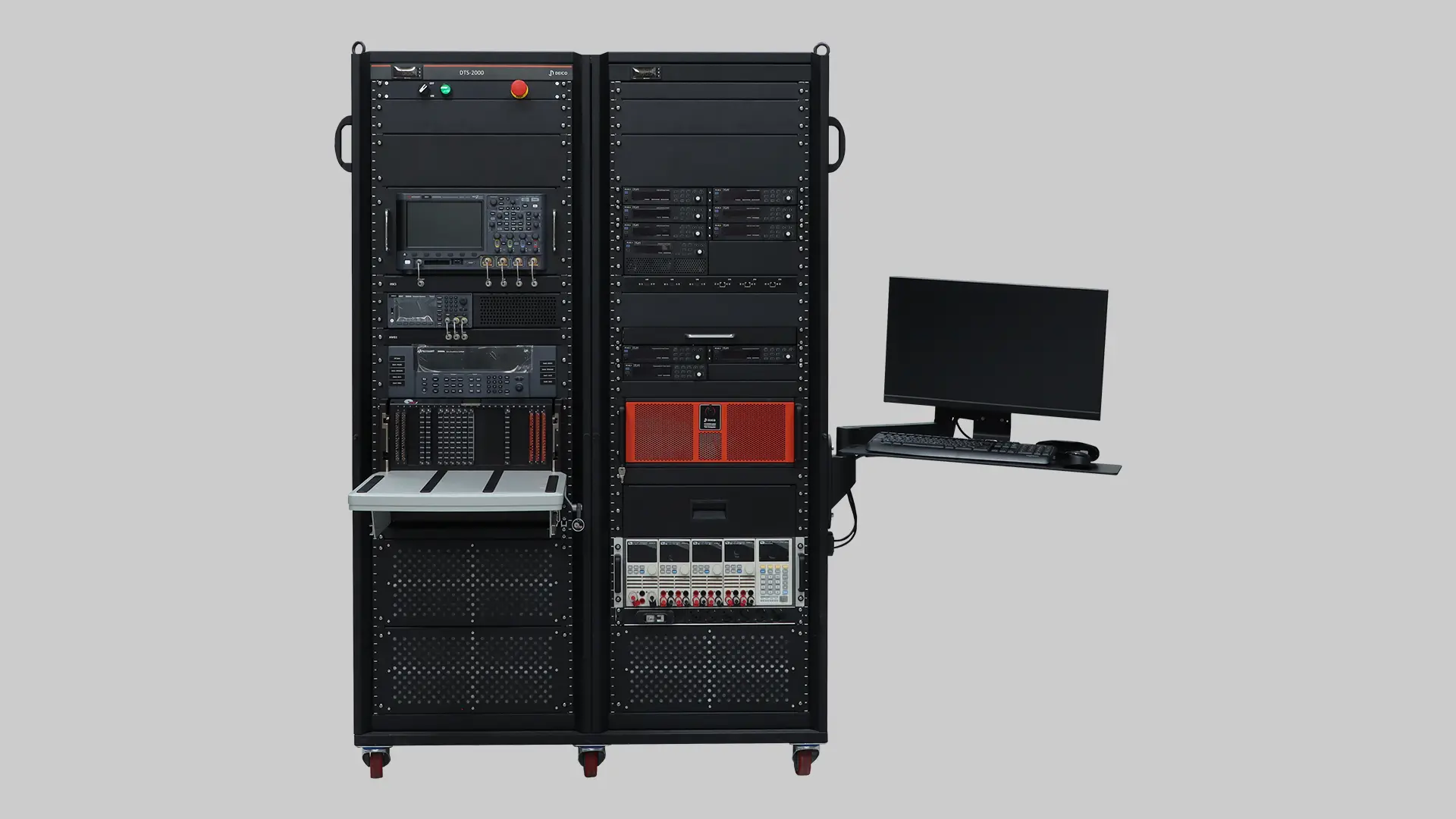Project Overview
Project Objective
The objective of this project is to develop an Electronic Test System that enables efficient, reliable, and rapid fault detection, maintenance, and repair of the electronic systems (at the LRU/SRU level) used in the F-16 fighter aircraft. The system aims to enhance the aircraft’s mission readiness, reduce maintenance downtime, and lower logistical costs.
Target Platform and Industry
Targeted Platforms
-
F-16 fighting falcon: The core focus of the project. The entire test infrastructure is developed specifically for the LRU/SRU components used in the F-16.
- Other fixed-wing military aircraft: Adaptable for aircraft such as the F-4, Hürjet, and similar platforms.
- Helicopters and UAV systems (potential expansion): Thanks to its modular design, the system can be adapted to other air vehicles.
Targeted Industries
- Military Maintenance, Repair, and Overhaul (MRO) centers
- Air force inventory and logistics commands
- Defense electronics manufacturers and system integrators
- Technical maintenance teams and base commands under the Ministry of Defense
- Defense R&D Institutions and test laboratories
Scope and Functionality
This project involves the development of an Electronic Test System designed to test, diagnose, and functionally verify the electronic systems used in the F-16 fighter aircraft—particularly the Line Replaceable Units (LRUs) and Shop Replaceable Units (SRUs).
Core Functions:
- Detection and classification of faulty LRUs/SRUs
- Execution of functional tests (analog, digital, RF, data communication, etc.)
- Analysis and reporting of test results
- Execution of automated test scenarios
- Operator guidance through a user-friendly interface
- Support for maintenance and calibration processes
Technical Specifications
System Capabilities
-
Variety of switch options: Matrix switches, relays, multiplexers, etc.
- High power capability DC power supplies
- High power capability single phase AC power supplies
- High power capability three phase AC power supplies
- High power capability DC electronic loads
- Standardized ITA (Interface Test Adaptor) designs
- Supports full simulation and monitoring of avionics buses, including MIL-STD-1553B
- Supports simulation and monitoring of serial interfaces, including RS-422 and RS-485
- Signal simulation and measurement for analog inputs, discrete I/O, and serial communication with precise electrical timing
- Ethernet-based avionics network simulation and traffic monitoring
- I/O conditioning to match aircraft electrical characteristics
- Mass interconnect interface for fast, reliable UUT connections
- Intuitive GUI for test automation, monitoring, and analysis
Standards, Protocols, and Compatibility
-
Ethernet controlled
& SLSC modular architecture
- MIL-STD-1553 interface support
- RS-422 and RS-485 serial communication
- Ethernet-based avionics network support
DEICO Modules Used
-
Ethernet controlled
modules (DE2001, DE2101, DE2102)
- PDU
Project Value and Impact
Why This Project Matters
-
Increased mission availability: enables rapid fault detection, reducing aircraft turnaround times
- Reduced maintenance and logistics costs: accurate diagnostics prevent unnecessary replacements
- Sustainable maintenance infrastructure: Offers a reusable and upgradable solution
- Improved training and testing standards: Supports standardized procedures and technician training
Customer and Industry Benefits
Contributions to the customer
- Improved mission readiness and reduced downtime
- Fast and accurate LRU/SRU fault diagnosis
- Reduced maintenance time through automation
- Enhanced technical personnel training
- Efficient inventory management through data-driven insights
Contributions to the industry
- Strengthened local test system development capabilities
- Modular, scalable architecture adaptable to multiple platforms
- Ecosystem development with local industry involvement
- High export potential due to NATO compatibility and global F-16 use
